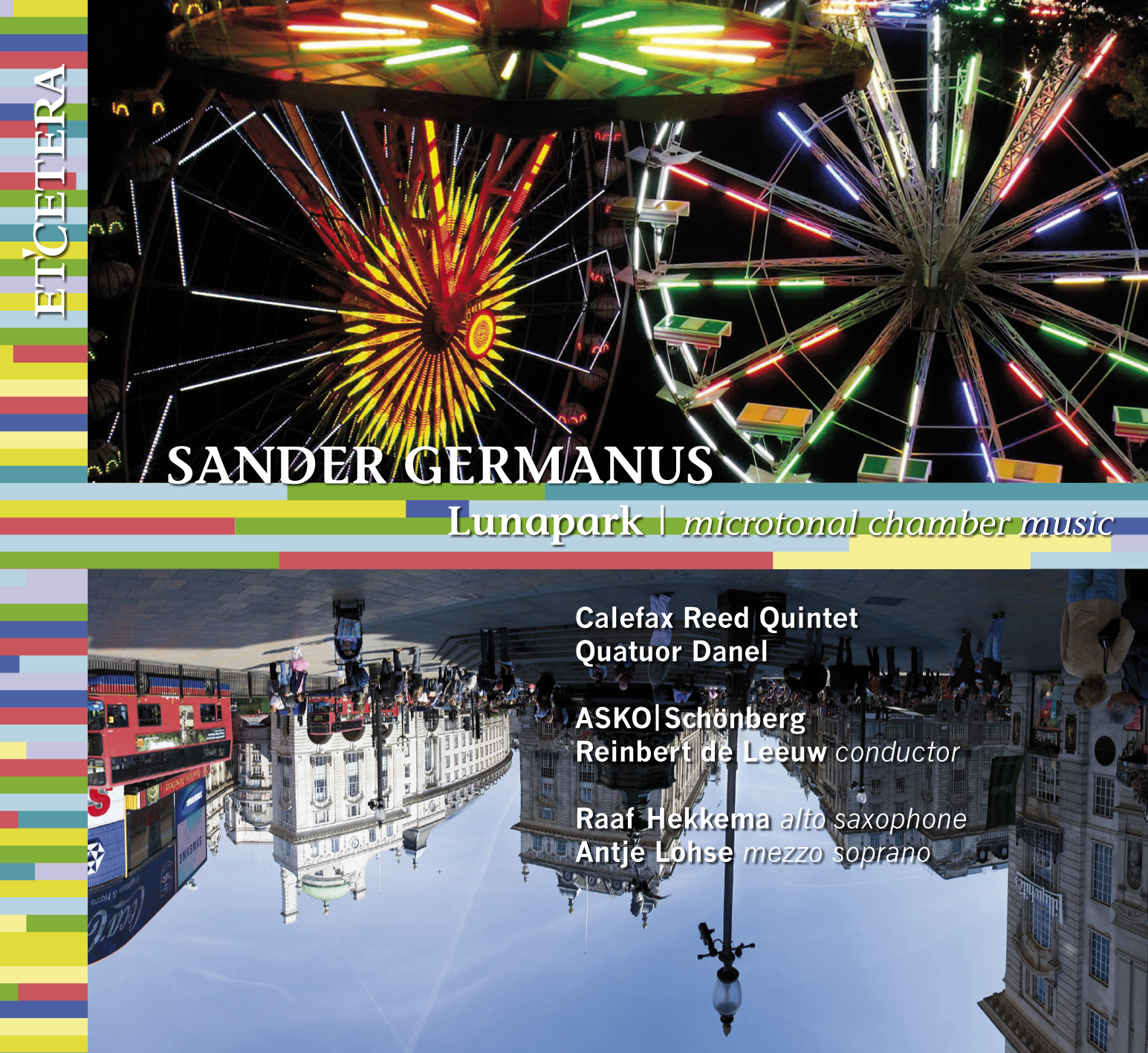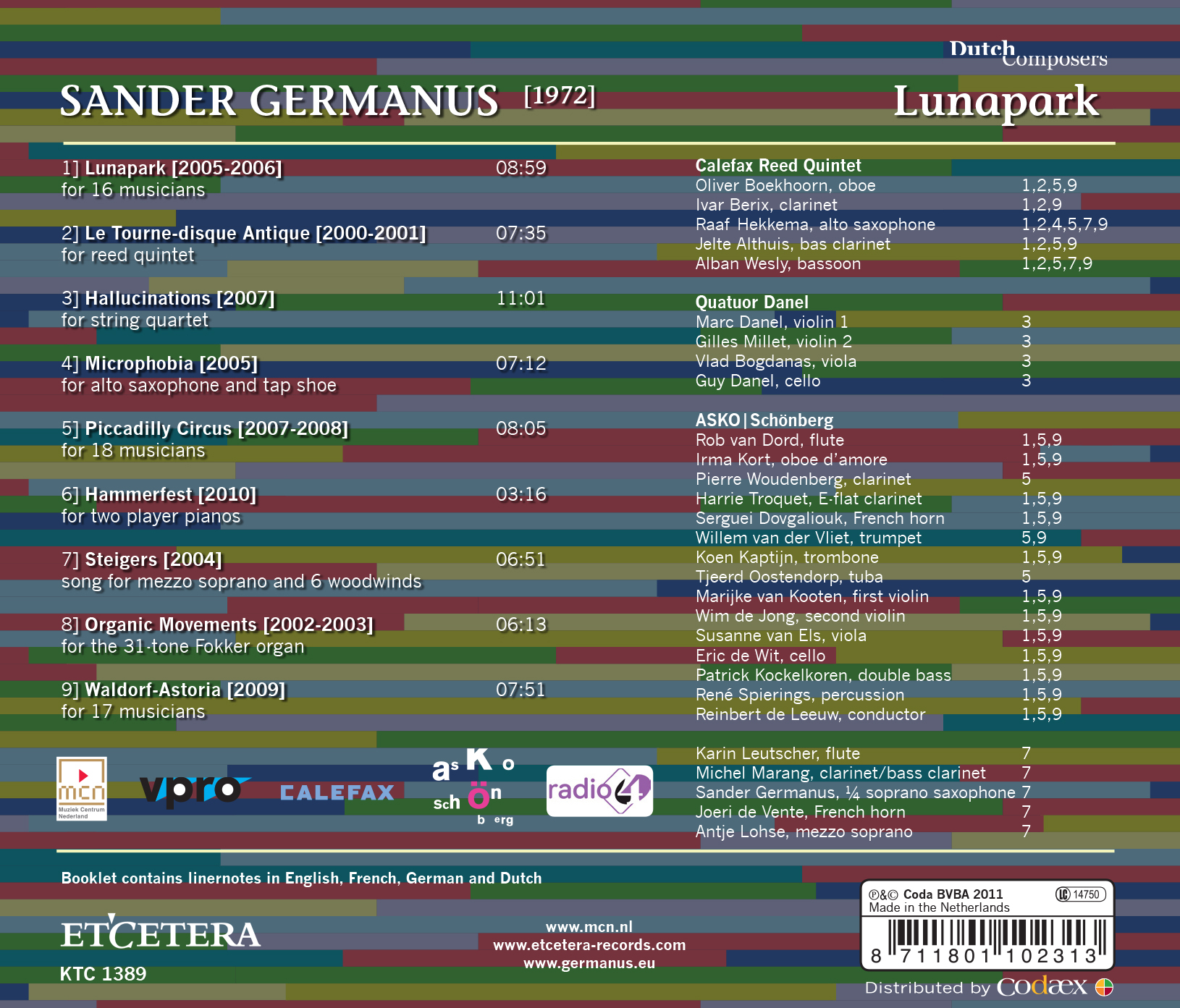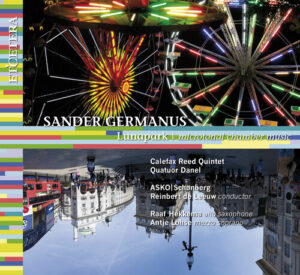1. Lunapark (2005-2006) for 16 musicians
Composer: Sander Germanus
Artist(s): Calefax Reed Quintet, ASKO | Schönberg
2. Le Tourne-disque Antique (2000-2001) for reed quintet
Composer: Sander Germanus
Artist(s): Calefax Reed Quintet, ASKO | Schönberg
3. Hallucinations (2007) for string quartet
Composer: Sander Germanus
Artist(s): Quatuor Danel
4. Microphobia (2005) for alto saxophone & tap shoe
Composer: Sander Germanus
Artist(s): Raaf Hekkema
5. Piccadilly Circus (2007-2008) for 18 musicians
Composer: Sander Germanus
Artist(s): Calefax Reed Quintet, ASKO | Schönberg
6. Hammerfest (2010) for two player pianos
Composer: Sander Germanus
Artist(s): Sander Germanus
7. Steigers (2004) for mezzo soprano and 6 woodwinds
Composer: Sander Germanus
Artist(s): Antje Lohse, Michel Marang, Sander Germanus, Joeri de Vente, Karin Leutscher, Alban Wesly
8. Organic Movements (2002 – 2003) for the 31-stone Fokker organ
Composer: Sander Germanus
Artist(s): Sander Germanus
9. Waldorf-Astoria (2009) for 17 musicians
Composer: Sander Germanus
Artist(s): Calefax Reed Quintet, ASKO | Schönberg





Reviews
There are no reviews yet.